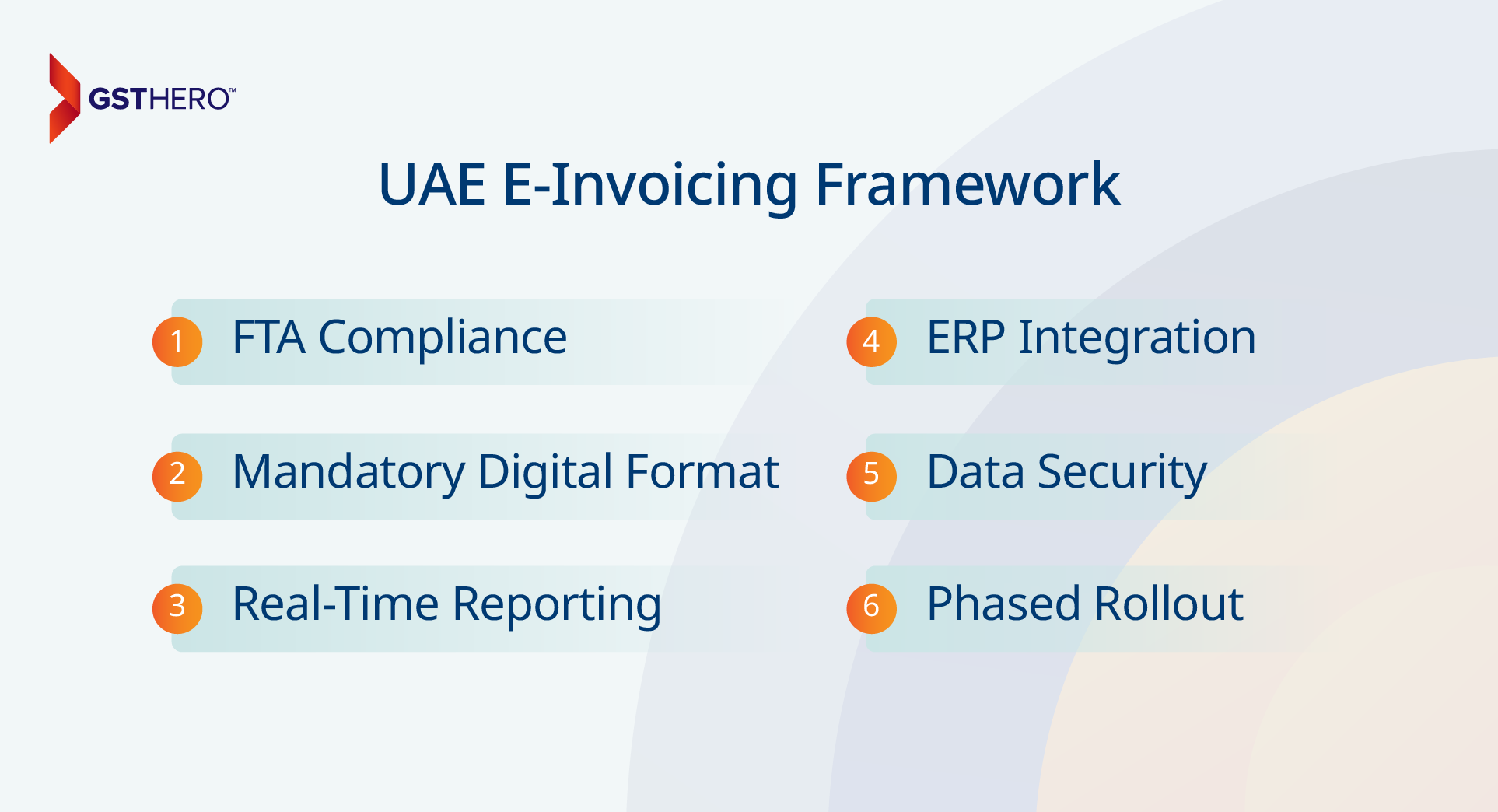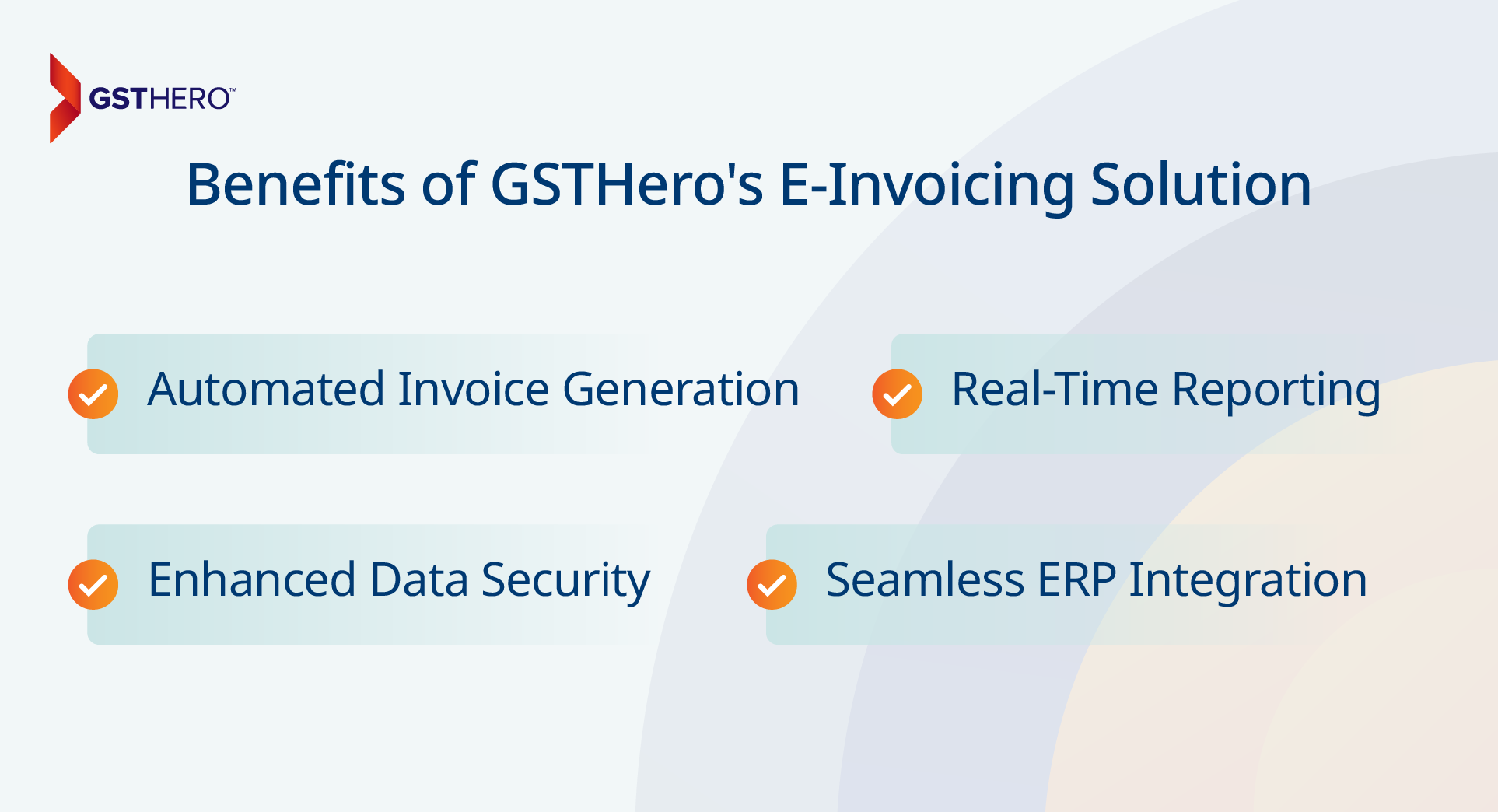E-invoicing is changing the game for businesses in the UAE, replacing bulky paper systems with innovative, efficient digital processes. Led by the Federal Tax Authority (FTA), it's all about making invoicing faster, easier, and more reliable. No more lost paperwork or manual errors—just instant access and smooth operations.
But it's not just about ticking compliance boxes. E-invoicing cuts costs, improves accuracy, and frees up time for what matters: growing your business. Plus, it's a step toward sustainability, reducing paper waste and aligning with eco-friendly practices.
Whether you're a small business or a big corporation, e-invoicing isn't just a requirement—it's an upgrade.
With better cash flow management and real-time data at your fingertips, it's the more innovative way to stay ahead in today's competitive market.
What Is the UAE E-Invoicing Framework and How Does It Work?

The UAE's e-invoicing framework, operated by the Federal Tax Authority (FTA), transforms invoicing from paper to digital, making compliance smoother and business processes more efficient. The UAE's e-invoicing framework simplifies compliance, boosts efficiency, and secures data, preparing businesses for a digital-first future. Here's a brief analysis:
FTA Compliance: Invoices must meet FTA's digital standards, with phased compliance expected by 2026. The framework aligns with global standards, like Peppol, easing cross-border transactions.
Mandatory Digital Format: Invoices are issued, transmitted, and stored in electronic invoices, cutting down on manual entry and paper use.
Real-Time Reporting: E-invoices allow for instant reporting to the FTA, improving transparency and compliance.
ERP Integration: Seamless integration with ERP systems (e.g., SAP, Oracle) saves time and ensures data accuracy.
Data Security: Encrypted, trackable e-invoices enhance security and help prevent fraud.
Phased Rollout: E-invoicing implementation in UAE gives businesses time to adjust and comply with minimal disruption.
What Is the E-Invoicing Format for UAE
To comply with UAE regulations regarding e-invoices, one must follow a specific format to ensure clarity, accuracy, and compatibility. Here's a breakdown:
1. Digital File Types: E-invoices should be issued in digital formats like XML or JSON, enabling efficient data handling and sharing.
2. Structured Data for Consistency: Structured data standards make e-invoices compatible with local and international systems.
Accepted standards include:
UBL (Universal Business Language): A globally recognized format that organizes data in a standardized way, making it easy to read and process.
PINT (Peppol Invoice Standard): Part of the Peppol-based model, this standard allows for seamless cross-border transactions by aligning with international e-invoicing in UAE practices.
How Can Businesses Ensure Regulatory Compliance and Avoid Penalties in the UAE?
In the UAE, regulatory compliance isn't simply a box to study—it's a necessary part of business. The FTA's e-invoicing mandate requires companies to adopt digital invoicing to ensure transparency, improve tax collection, and align with international standards. Failure to comply with these requirements could lead to significant penalties and reputational risks.
By implementing an e-invoicing solution that meets FTA invoicing standards, businesses can:
Ensure accuracy and traceability: E-invoices are generated with standardized data formats, making verifying transactions more accessible for the FTA.
Simplify audit processes: Digital records are organized, easily retrievable, and securely stored, simplifying audits and inspections.
Avoid penalties: Compliance with e-invoicing guidelines protects companies from fines or sanctions due to missing or inaccurate invoices.
Companies that transition early to an FTA-compliant e-invoicing system safeguard themselves against regulatory risks and position themselves as trustworthy, transparent entities in the eyes of authorities and business partners.
How Does E-Invoicing Enhance Accuracy and Reduce Errors for Businesses?
Manual invoicing, while still used by many companies, is fraught with potential errors. Inaccurate client details, incorrect tax rates, and mismatches in product descriptions are all common pitfalls of manual data entry. Even a tiny mistake can cascade into more significant issues, including customer dissatisfaction, delays in payment, and tax compliance challenges.
An e-invoicing system can drastically reduce these risks by automating data entry, applying pre-set tax codes, and performing checks for accuracy. With e-invoicing, UAE businesses can benefit from:
Consistent data quality: Automated data entry reduces typos and inconsistencies.
Error reduction: Built-in checks for essential information ensure that invoices are complete and accurate before submission.
Improved relationships: Fewer errors mean smoother transactions, improving customer satisfaction and trust.
Moreover, the accuracy and efficiency of e-invoicing allow businesses to redirect time and resources previously spent on correcting errors, ultimately boosting productivity.
How Does E-Invoicing Accelerate Cash Flow and Enable Faster Payments?

A significant advantage of e-invoicing is its potential to shorten payment cycles significantly. Traditional paper invoices can take days or weeks to reach the recipient, depending on the postal system or manual handling time. On the other hand, e-invoices are delivered instantly, often with automated reminders, encouraging timely payments.
Accelerated cash flow through e-invoicing means:
Reduced Days Sales Outstanding (DSO): Instant delivery of invoices enables quicker payment processing, helping to reduce the average collection period.
Improved liquidity: Faster payments mean businesses can access working capital sooner, supporting ongoing operations or reinvestment.
Enhanced vendor relationships: Prompt billing and faster payment cycles strengthen supplier relationships, as vendors appreciate timely transactions.
This benefit is especially crucial for SMEs as it enables them to maintain liquidity without relying on external financing options like loans or credit lines.
How Does E-Invoicing Drive Cost Savings and Improve Efficiency for Businesses?
The shift from paper invoices to digital formats results in measurable cost savings for businesses. Consider the cumulative expenses associated with printing, mailing, handling, and storing paper invoices—not to mention the time employees spend managing these tasks manually. E-invoicing eliminates or drastically reduces these costs.
Businesses can expect the following cost and efficiency gains from e-invoicing:
Lower administrative costs: Automating invoice processing reduces labor and material expenses.
Eliminating physical storage needs: Digital invoices are stored in secure online databases, freeing up physical office space and reducing storage costs.
Reduced processing time: Automated workflows enable finance teams to process more invoices in less time, further cutting operational costs.
In the long term, these savings add up, allowing businesses to allocate funds more strategically or reinvest in growth initiatives.
How Does E-Invoicing Enhance Data Security and Prevent Fraud?
E-invoicing doesn't just make invoicing easier—it also makes it safer. Using encryption and secure digital storage, e-invoicing protects sensitive information from unauthorized access, loss, or tampering. Unlike paper invoices that can quickly go missing, e-invoices are securely stored, reducing the chances of data breaches and adding peace of mind for companies and their clients.
Here's why e-invoicing boosts security:
Encrypted Transactions: E-invoices are encrypted, so data is kept safe as it moves between you and your customers.
Access Controls: Only approved team members can view invoice data, reducing the chance of internal fraud.
Clear Audit Trail: E-invoicing provides a digital record for every step in the process, making tracking and audits easy and thorough.
These features protect financial information and help build trust with customers, knowing their data is safe.
How Does E-Invoicing Help Businesses Future-proof for Digital Transformation?
The UAE's e-invoicing mandate is part of a more significant movement toward digital transformation. Companies that start using e-invoicing now will be ready for future tech advancements, from better reporting tools to new data insights.
With e-invoicing, companies are prepared for:
Scalability: E-invoicing grows with your business, making it easy to handle more clients and higher volumes without extra hassle.
Seamless Tech Integration: E-invoicing works well with ERP and CRM systems, helping you build a connected digital ecosystem.
Staying Competitive: Early adopters of digital tools set themselves apart as innovative leaders, keeping a competitive edge in a fast-paced market.
By adopting e-invoicing, UAE businesses can adapt smoothly to a digital-first economy, meeting compliance requirements while staying ahead of the curve.
Streamlining Tax Compliance with GSTHero
GSTHero is a leading solution for businesses aiming to simplify their GST compliance and e-invoicing processes. Trusted by organizations across various industries, GSTHero provides a user-friendly platform designed to help businesses navigate complex tax regulations with ease.
With its advanced features, GSTHero empowers businesses to enhance operational efficiency, ensure data accuracy, and stay compliant with evolving regulatory frameworks. This also makes it an essential tool for modern enterprises striving to optimize their tax management and streamline their operations.
How GSTHero Simplifies E-Invoicing Compliance
GSTHero provides a robust e-invoicing solution to meet compliance requirements in the UAE and beyond. Designed to automate invoicing tasks, GSTHero ensures businesses stay compliant while improving efficiency and accuracy in their operations.

Key Benefits of GSTHero's E-Invoicing Solution:
Automated Invoice Generation
GSTHero automates the creation of e-invoices in FTA-compliant formats like XML or JSON, reducing manual errors and saving time.
Seamless ERP Integration
It integrates smoothly with popular ERP systems such as SAP, Oracle, and Tally, ensuring accurate data synchronization and effortless workflow management.
Real-Time Reporting
GSTHero enables instant reporting to tax authorities, helping businesses maintain transparency and comply with regulatory requirements.
Enhanced Data Security
With robust encryption and secure storage, GSTHero protects sensitive business information, reducing the risk of fraud and unauthorized access.
Conclusion
For businesses in the UAE, e-invoicing is more than just a compliance box to tick—it's a smart move toward modernizing operations and staying relevant in a digital world. The benefits go beyond cost savings and faster payments; e-invoicing makes businesses more efficient, secure, and adaptable.
Embracing this shift ensures compliance today and sets companies up for future success, making it easier to thrive in an increasingly digital landscape.
FAQ On E-Invoicing Simplifies Compliance and Operations in the UAE
E-invoicing concerns the digital creation, transmission, and storage of invoices for extensive durations. It is mandatory in the UAE to enhance tax compliance and improve transparency. This system streamlines processes and aligns with global tax standards.
The Federal Tax Authority (FTA) establishes the regulations and procedures for executing e-invoicing in the UAE. It ensures businesses comply with tax requirements and monitors the transition to digital invoicing. The FTA also provides frameworks to simplify implementation.
E-invoicing automates invoicing tasks, ensuring accurate and timely reporting to the FTA. It reduces manual errors, improving overall compliance with tax regulations. Businesses can avoid penalties by meeting regulatory standards.
The FTA mandates that e-invoices be generated in digital formats like XML or JSON. These formats ensure seamless compatibility with global e-invoicing standards like Peppol. They furthermore enable secured data transmission and efficient processing.
E-invoicing aligns with global standards like Peppol to simplify cross-border trade. It ensures seamless compatibility with international systems, reducing complexities. This approach facilitates faster and more accurate transactions.
Failure to comply can lead to significant penalties, damage to reputation, and operational disruptions. Penalties are imposed for missing, inaccurate, or non-compliant invoices. Businesses must adopt compliant systems to avoid these risks.
E-invoicing automates data entry and applies validation checks, reducing typos and discrepancies. It assures invoices are correct and finished before submission, which minimizes issues like incorrect tax rates or mismatched details.
Digital invoices are delivered instantly, reducing delays in payment processing. Automated reminders enable clients to produce timely payments, which is less time-consuming. Faster payments improve liquidity and support smoother cash flow management.
E-invoicing employs encryption and protected storage to safeguard susceptible financial data. It controls unauthorized admission and reduces the risk of fraud. A clear audit trail further enhances security and accountability.
E-invoicing transforms invoicing processes by integrating smoothly with ERP systems. It enables scalability and real-time data processing and fosters digital innovation. Businesses adopting it are better prepared for future technological advancements.
